Different Strokes for Different Folks: The Best Swimming Streamline
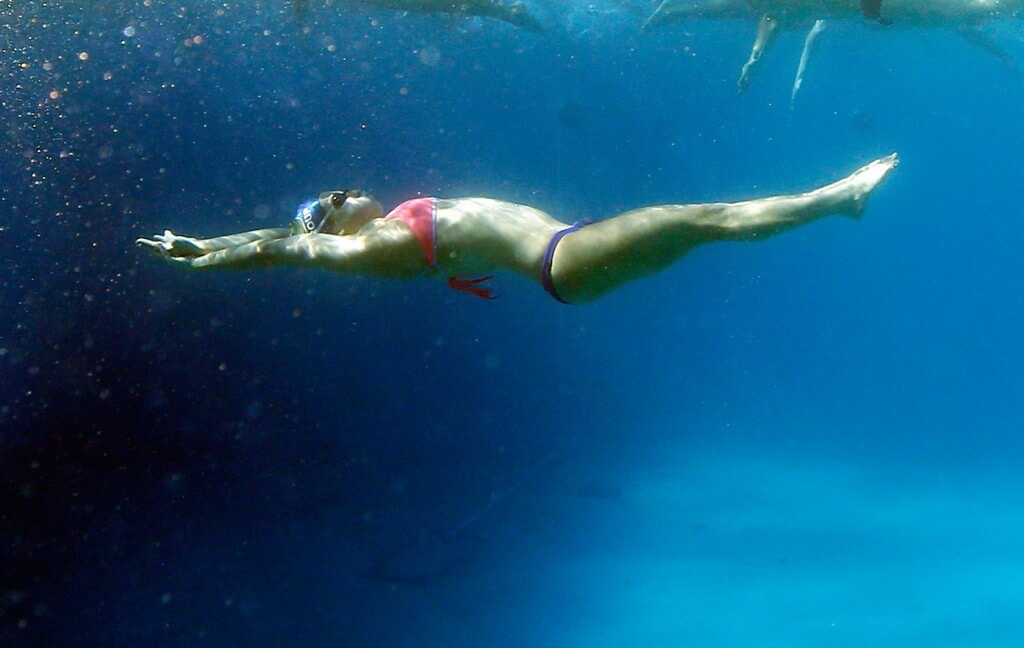
By Dr. G. John Mullen
No two people are alike, nor are two swimmers. Look at the NCAA championships or the various conference championships and you’ll see similar body types at the pool, but no two are identical. Look around your high school conference meet and you’ll see a greater variance in body type. Study the physiques of a triathlete and an Olympic pool swimmer, and I guarantee their body types are far different.
Yet, coaches often prescribe the same technique suggestions for each swimmer, ignoring their anthropomorphic (body ratios), flexibility, strength, etc. If we all agree no two swimmers are alike, then why are most swimmers on the same team instructed to do the same thing? Could we expect Matt Grevers (6’8″ 229 lbs) and Ryosuke Irie (5’10” 137 lbs) to use the same technique for the entire race? If we can’t expect these two Olympians to use the same skills, then can we expect two people of highly different skills, sizes, and flexibility to use all the same technique?
What is Your Swimming Streamline Camp?
I’ve heard countless coaches suggest improving swimming streamline is the easiest route for swimming improvement, and I couldn’t agree more. Often adjusting your swimming streamline takes very little extra energy (other than the energy required to learn a new skill), yet you swim faster. What a good deal! Streamline is a position that creates the least amount of resistance. When you’re stationary, a straight line is this position, but obviously a streamline position for different body types results in varying swimming streamline positioning. Overall, there are two camps for streamline:
- Biceps Over Ears: This position is believed to minimize water between the body and is performed by the swimmer squeezing their arms (particularly their biceps) against their ears.
- Elbows Behind Head: This position attempts to maximally streamline the arms and reduce drag in front and on the side, as the swimmer squeezes their arms together, behind their head.
Biceps Over Ears Streamline:
Elbows Behind Head Streamline:
These two options don’t sound vastly different from one another but talk to any true swim nerd and you’ll certainly get a full-winded opinion on their opinion. Perhaps both camps are correct…
A Tale of Two Swimmers
As an example, let’s look at two common swimmers, Tight Tommy and Flexible Frank.
- Tommy is a Masters swimmer in his 30s. Tommy was an NCAA qualifier in college and is now a computer programmer and sits 60 hours a week at a desk. He has the typical “swimmer’s posture” with rounded shoulders and a curved back.
- Flexible Frank is a high school swimmer. Frank started swimming when he was 4-years-old and although he was never diagnosed with hypermobility, he can touch his forearms on the ground. Frank also has hyperextended elbows and knees and admits his shoulders often feel “unstable”.
These two swimmers sound very different, but with every team I consult, whether it is a Masters, college, or club team, I see a lot of Tight Tommys and Flexible Franks.
Which Swimming Streamline is Best for Tommy and Frank?
If a swimmer is extremely flexible, they likely — not always, but likely — arch their back during their swimming streamline and aren’t capable of stabilizing their upper torso/arms. This altered position disrupts streamline, while adding extra stress on the lumbar spine. Frank likely streamlines like this. Therefore, a swimming streamline position with the elbows against the ears is likely more suited for him.
For Tommy, if he streamlined at his ears, he’d likely remain hunched in his swimmer’s posture and face tremendous water resistance in the water. Therefore, Tommy should have his arms behind his ears, bringing him out of spinal flexion and into a streamlined position.
Does this Work For Everyone?
Clearly, this simplistic example won’t work for everyone. Some Tommys are able to maximally streamline with their elbows behind their head, while some Franks are able to move out of flexion during streamline. Nonetheless, having two different options for a swimmer can help all of your swimmers. Remember, have a reason behind every biomechanical adjustment to each swimmer! Just because an Olympian streamlines with their elbows behind their head doesn’t mean it is best for you!




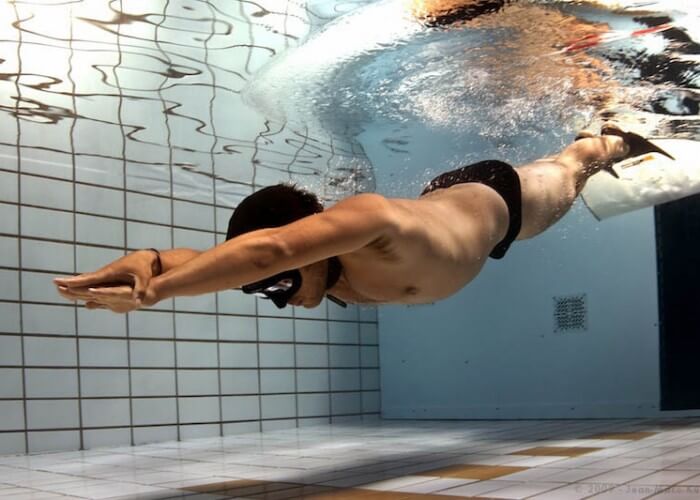
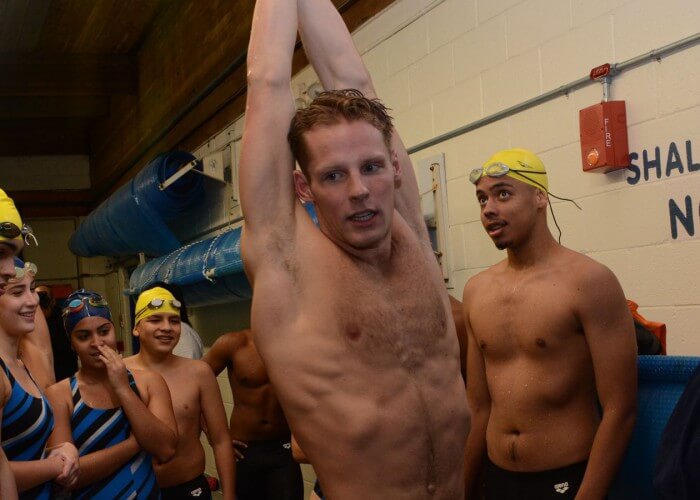
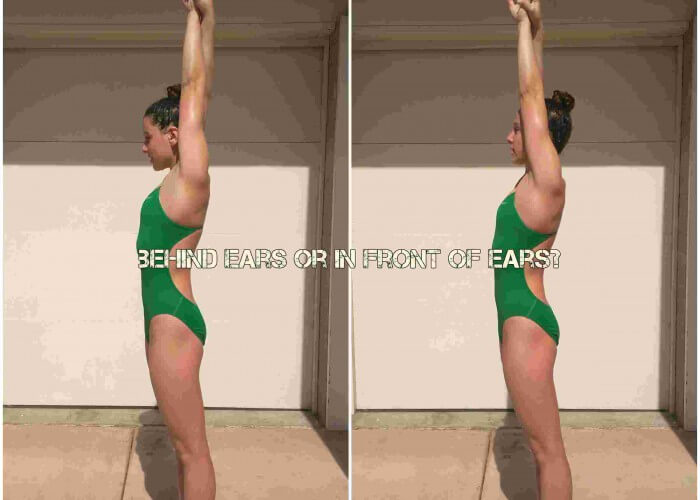
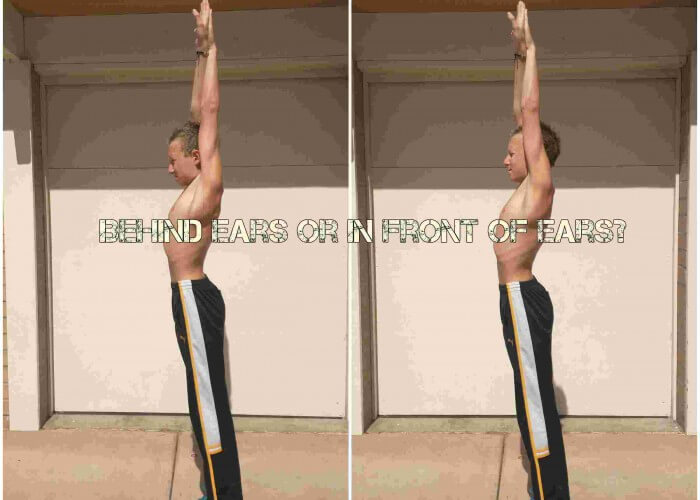
Shaun Abbott. This actually was a massive epiphany for me haha, I’ve never thought about the difference. Which one do you do?
Good on you Cam, mate I’m neither, I’m not Franky flexible but because my back is not straight I’m hands behind ears. You?
Elbows behind ears for sure, I’ve never even thought about doing it another way
Elbows behind ears for sure, I’ve never even thought about doing it another way
Yeh. No way
Yeh. No way
Yeh. No way
Emy Ahmad
The two paragraphs before the conclusion need to be checked- mention Frank in both, not Tommy. And I would think the bottom two pictures show far too much arching of the back for a good streamline.
This is super important in all aspects of swimming and particularly for dolphin kicking and monofin use, since we’re in that position the entire time!.
Look at my photos from RUM Rickyton
Jeroen Dellebeke
Oke
Oke
??
Streamline is important for sure, but I think the position you settle on should be the one you can hold at speed, and leads into a good breakout. So bracing by pushing the head back, or squeezing the ears, whichever you can do best, whichever you can get out of without losing speed, bingo.
Have you ever noticed that a fish is never streamline nor still!
Jovarn Broughton
Erin Braden Goss